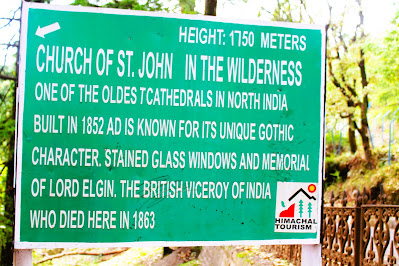Reliving History through Travel
Have you ever wondered about the history of the places that you visit?
This
question intrigues me and I do think that reading, internalizing and viewing the
place for its glory makes your trip more fulfilling and wholesome. This has led
me to dwell on the history of different places, no matter how big or small.
 |
| Rabdentse Ruins (PC: Rajni) |
On my journey to Pelling (Sikkim), I decided to visit the Rabdentse Ruins. A short steep trek up the hills took me to the ruins. Established by Tensung Namgyal, the second Chogyal, Rabdentse was the capital of the Kingdom of Sikkim from 1670 to 1814. It was attacked and destroyed by the Gorkhas. The remains of the palace, some chortens and a monastery exist today. The Rabdentse ruins are part of the Buddhist pilgrimage starting with Dubdi Monastery at Yoksum, followed by Norbugang Chorten, Tashiding Monastery, Pemayangtse Monastery, Sanga Choeling Monastery, and the Khecheopalri Lake.
 |
| Chortens |
As I entered
this old capital, I couldn’t help but imagine the strong north-eastern forces
of India. The once royal palace looked at me with a stoic glance. Seated
regally on a cliff, the ruins face the majestic Kanchenjunga. When the sun’s
rays hit those white mountains, the bright light falls on the ruins, as if it is blessing their existence. The voices of those brave and mighty echoed through
the lichen filled pathways.
 |
| The ruins of the palace |
The history
of Northeast India has been long ignored. Visiting this place, learning about
the Chogyals and walking by the decaying walls highlighted the very essence of
time, the entity that once lost can never return.
The St. John’s Church of Wilderness in Mcleodganj (Himachal Pradesh), presented a form of history which is neither popular nor sensationalized. This quaint church was built in 1852 by the British. I sat there, absorbing all the tranquillity and serenity. As I made my way out, I came across a graveyard.
 |
| St. John's Church of Wilderness |
They were of British families from the 19th
century. Graves of the once old and young lie in a secluded Church, high up the hills.
Most of the men buried down there were part of the army, in service to The Crown. I’m grateful to have been exposed to such sensitive and personal
history.
These people
who served in India probably never got to return home. Their descendants would
hardly know about the graves of their ancestors. While leaving, I had a deep longing
to stay in the wilderness, amidst this kingdom of solitude.
When I visited Bhaja Caves in the vicinity of Lonavala (Maharashtra), I was blown away by the beauty of this Buddhist structure. On a hilltop, it is a small cluster of Buddhist Caves built by the Hinayana sect. Although similar to the popular Karla caves in style and architecture, it is untouched by the perils of casual tourism.
 |
| Bhaja caves |
The work on these Caves started in the 2nd century BC and finished in the 2nd century AD. It is so splendid that one is immediately transported back in time, to the world of spiritual advancements in Buddhism. Each rock-cut chamber housed either a monk or a stupa.
 |
| Stupas at Bhaja Caves |
These stupas were carved from the rock
and consisted of the relics of the monks that once lived there. The rooms were self-sufficient
with an indentation to store water and oil lamps. I moved from floor to floor assimilating
the essence of the monastery. It is one of those places where one
can sit and meditate peacefully.
The seven
islands of Bombay were initially in the hands of the Portuguese. In 1661, when Princess
Catherine Briganza married King Charles II, these islands were handed over as
dowry to England. After acquiring them, King Charles leased the islands to the
East India Company in 1668 for 10 pounds per annum.
The city was
further developed and a Fort was built, separating the European side from the
Indian side. This fort had 3 doors. One of them was right in front of, St.
Thomas Cathedral. The foundation stone was laid in 1676 by the Governor of
Bombay, Gerald Aungier. After his death, the building site lay desolate until Mr
Cobbe came along. The church finally opened its doors to the public on
Christmas Day, 1718.
Functional
even today, the walls of the church tell tales of those who laid their lives to World Wars. The area around the church was named after the gate installed right
in front of it. Hence, the name “Church-gate”, came into existence. Although,
neither the fort nor the gate remains, the name still sticks. If you are travelling to Mumbai and want to relive a slice of history, I urge you to
contact Khaki (Not sponsored) and partake in this wonderful heritage walk. You will indeed witness, the inception of Mumbai into the great city it is today!
 |
| The Church Gate |
Every place
has a story. If you imagine a
place to be a beautiful canvas painting, with bursts of blue, red and grey, the
people and events are tiny specs of white sprinkled all over it. When the wheel
of time spins and civilizations are destroyed, it is these stories that keep
them alive. These stories lingering in the minds of every new generation gives
birth to the past glory that will never return.







Comments
Post a Comment